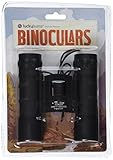Science Focus
original post »
Medical drugs are pretty nice. From antibiotics to chemotherapy to good old aspirin, not a day goes by that millions of people don't benefit from pharmaceutical medicine — even granting the occasional disaster.
But the American model of drug development is badly flawed. We use a patent system, so new drugs that make it through the approval process can enjoy a government-granted monopoly to make back the initial investment. But for treatments in which the patent doesn't work — either because the drug won't be widely used, or because it is already in the public domain — our system comes up short. Two recent stories, regarding antibiotics and psychedelics, including LSD and Ecstasy, illustrate the problem, as well as the solution.
Undoubtedly the more serious problem is with antibiotics, which are basically the foundation of modern medicine. Without them, there would be no transplant surgery and very little cancer treatment. Pneumonia and tuberculosis would kill millions yearly. Minor cuts and scrapes would again be potentially life-threatening — antibiotic-resistant infections already kill 23,000 people in the U.S. alone every year.
Furthermore, our current stock of antibiotics is being eclipsed by bacterial evolution, which makes diseases more resistant to drugs. Meanwhile, new antibiotic discoveries have been quite thin on the ground in recent years. That's why the potential discovery of a new antibiotic from a soil sample made headlines across the globe. Though it still has to make it through a slew of scientific hurdles to prove it's safe for humans (and the odds are very much against it), it would be the first new antibiotic in years.
There are many reasons for this dearth of discovery. But as Kevin Outterson points out, the patent model greatly exacerbates the problem. Any new antibiotic approved for use in humans will be immediately and rightly seized by the medical profession to make sure society can get the longest possible use out of it. Especially at first, prescriptions — and therefore drug company revenues — would be sharply limited. Indeed, over-marketing of antibiotics is a big part of what caused the resistance crisis in the first place. That, in turn, makes drug companies more reluctant to invest in new antibiotic research.
A different problem is when a potential medical use for a substance is found, but its patent has already lapsed. Any public-domain compound still has to undergo the studies to get FDA approval; but without the monopoly profits, no drug company will bother doing that science.
Psychedelics, such as psilocybin (one of the active ingredients in magic mushrooms) and LSD, are currently stuck in this limbo. As Michael Pollan details in a riveting and brilliant piece for The New Yorker, the science on psychedelics is making a comeback. After the 1960s, there was a decades-long crackdown on such research, sparked by irresponsible grandstanding by clowns like Timothy Leary on the one hand, and a far worse overreaction and backlash in mainstream society on the other. But in recent years, a dedicated group of researchers has been producing some solid research on various psychedelic compounds.
Though still preliminary, the results are nothing short of astounding. Whether it's MDMA (the active ingredient in Ecstasy) used to treat PTSD among veterans, or LSD used to treat anxiety and depression among the terminally ill, or psilocybin used to treat addiction, studies employing ordinary, conservative scientific techniques are finding hugely positive results.
The problem is that large-scale studies are needed to obtain final FDA approval, which makes them very expensive. Here's Pollan:
Recruitment is only one of the many challenges facing a Phase III trial of psilocybin, which would involve hundreds of patients at multiple locations and cost millions of dollars. The University of Wisconsin and the University of California, Los Angeles, are making plans to participate in such a trial, but F.D.A. approval is not guaranteed. [The New Yorker]
No drug company would waste money on those studies. It would be financially irresponsible.
So what is to be done? First, direct government funding is and always has been an important part of scientific funding. In a sane world, with substances as promising as the above psychedelics, the government would simply fund the research itself and be done with it. Only an increasingly anachronistic brand of drug warrior politics stands in the way. But with something like 22 veterans per day committing suicide, any treatment with a potential 60+ percent long-tem cure rate for PTSD ought to be jammed through mass trials at the highest possible speed.
Second, the patent model could be altered or abolished altogether. As Dean Baker and others have proposed, a prize fund might be set up, by which the government would propose various desired treatments, with the winnings given out to any drug that makes it through the FDA's approval process (which should be streamlined itself, but that's another post). A new broad-spectrum antibiotic might be awarded \$20 billion, which would then pass into the public domain so it could be available at low cost.
It's important to note that, contrary to certain conservative objections, this would only be changing, not increasing, the government's involvement in the drug market. Arguably, setting up a prize fund would involve less such intervention, since there would be fewer government-granted market monopolies.
At any rate, there are many other options we might consider. But the important thing to remember is that when it comes to medical science, there's simply no getting around government involvement — and we could be doing ours a lot better.
#science
» see original post http://theweek.com/articles/537694/why-government-should-funding-mass-scientific-studies-ecstasy-magic-mushrooms-lsd
See
Zazzle gifts tagged with 'science'

